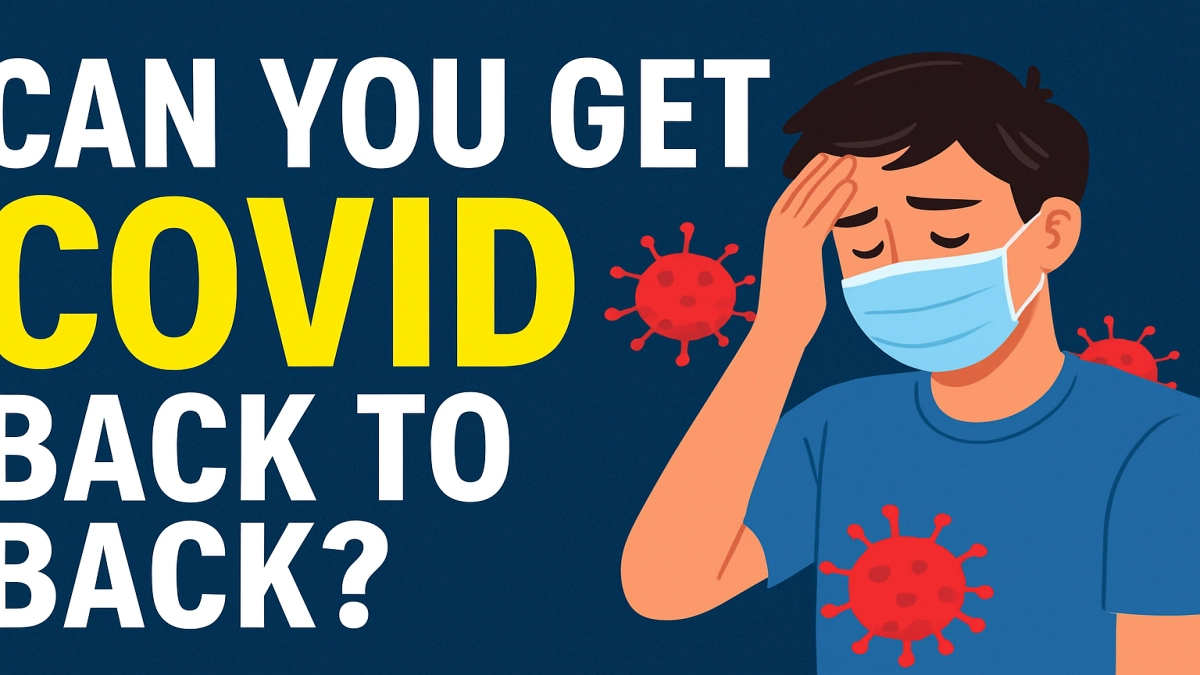The question of whether you can get COVID back to back—contracting the virus twice in rapid succession—has intrigued both the public and medical professionals since the pandemic began. As we move into 2025 and beyond, understanding this phenomenon is more critical than ever, especially with evolving variants and shifting immunity landscapes. This article dives deep into the science, experience, and expert perspectives surrounding consecutive COVID infections, offering a nuanced, authoritative guide for anyone seeking clarity on this complex topic.
Understanding COVID Reinfection: The Basics
Before exploring the possibility of back-to-back COVID infections, it’s essential to grasp what reinfection means in the context of SARS-CoV-2, the virus responsible for COVID-19.
- Primary Infection: The first time an individual contracts COVID-19.
- Reinfection: A subsequent infection after recovery, confirmed by genetic sequencing or a significant time gap.
- Back-to-Back Infection: Contracting COVID twice in a very short timeframe, often weeks apart, without a prolonged symptom-free period.
Why Does Reinfection Occur?
Reinfection can happen due to several factors:
- Waning Immunity: Over time, the immune system’s memory of the virus diminishes, reducing protection.
- Viral Variants: New variants may partially evade immunity from previous infections or vaccines.
- Immune System Variability: Individual differences in immune response affect susceptibility.
Can You Get COVID Back to Back? The Evidence
Scientific Studies and Data
Emerging research indicates that while reinfections are possible, contracting COVID back to back within a very short period is relatively rare but not impossible.
- CDC Guidelines: The Centers for Disease Control and Prevention (CDC) suggest that reinfection is unlikely within 90 days of the initial infection due to residual immunity. However, exceptions exist, especially with immune-compromised individuals or exposure to significantly different variants.
- Case Reports: Documented cases of reinfection within weeks have been reported, often involving different viral strains.
- Immunity Window: The immune system typically mounts a robust response post-infection, but this can vary widely.
Why Back-to-Back Infections Are Uncommon
- Immune Memory: After infection, the body produces antibodies and T-cells that provide short-term protection.
- Cross-Protection: Even if a new variant emerges, some immune cross-reactivity usually prevents immediate reinfection.
- Testing Nuances: Sometimes, prolonged viral shedding or false positives can mimic reinfection.
Factors Increasing Risk of Consecutive COVID Infections
Certain conditions and behaviors can elevate the risk of back-to-back COVID infections:
- Immune Suppression: People with weakened immune systems (e.g., transplant recipients, chemotherapy patients) may not develop strong immunity.
- High Exposure Environments: Healthcare workers or those in crowded settings face repeated viral exposure.
- Variant Evolution: Rapidly mutating variants with immune escape capabilities increase reinfection risk.
- Incomplete Vaccination or Boosters: Lack of up-to-date vaccination can reduce protection.
Real-World Example (Section for Proprietary Data or Expert Anecdote)
Including anonymized patient data or expert interviews here could illustrate how immune suppression or variant exposure led to back-to-back infections, adding authenticity and depth.
Symptoms and Diagnosis: Differentiating New Infection from Prolonged Illness
One challenge in identifying back-to-back COVID infections is distinguishing a new infection from lingering symptoms or viral remnants.
- Long COVID vs. Reinfection: Persistent symptoms may not indicate a new infection but rather post-viral syndrome.
- PCR Testing Limitations: PCR tests can detect non-infectious viral RNA weeks after recovery.
- Genomic Sequencing: The gold standard for confirming reinfection involves sequencing viral samples to identify different strains.
Practical Advice: What to Do If You Suspect Back-to-Back COVID
If you or someone you know suspects a second COVID infection shortly after recovery, consider the following steps:
- Seek Medical Evaluation: Confirm diagnosis with a healthcare provider, possibly including genomic testing.
- Isolate Appropriately: To prevent spread, follow isolation guidelines even if symptoms seem mild.
- Monitor Symptoms Closely: Watch for signs of severe illness or complications.
- Update Vaccinations: Ensure booster doses are current to enhance immunity.
- Support Immune Health: Maintain nutrition, hydration, and rest to aid recovery.
The Role of Vaccination and Boosters in Preventing Reinfection
Vaccination remains the cornerstone of COVID prevention, including reinfections.
- Hybrid Immunity: Combining vaccination with natural infection often yields stronger, broader immunity.
- Booster Shots: Timely boosters adapt immunity to emerging variants.
- Vaccine Efficacy: While vaccines may not completely prevent infection, they significantly reduce severity and transmission.
Psychological and Social Implications of Back-to-Back COVID
Beyond physical health, consecutive infections can impact mental well-being and social dynamics.
- Anxiety and Uncertainty: Fear of reinfection can cause stress and affect daily functioning.
- Work and Social Disruption: Repeated isolation periods disrupt employment and relationships.
- Healthcare Burden: Increased cases strain medical resources and public health systems.
Future Outlook: What Research and Public Health Experts Are Watching
As we look ahead, several areas are critical for understanding and managing back-to-back COVID infections:
- Variant Surveillance: Tracking mutations to anticipate immune escape.
- Immunity Duration Studies: Longitudinal research on how long protection lasts post-infection and vaccination.
- Therapeutic Advances: Development of treatments to reduce viral load and transmission.
- Public Health Policies: Adaptive guidelines balancing prevention with societal needs.
Actionable Takeaways
- Reinfection with COVID is possible, but back-to-back infections within weeks are uncommon.
- Immune status, variant type, and vaccination influence reinfection risk.
- Confirming reinfection requires careful clinical and laboratory evaluation.
- Vaccination and boosters remain vital tools to reduce reinfection and severity.
- Mental health support is essential for those experiencing repeated illness.
Conclusion
The possibility of getting COVID back to back is a nuanced topic that blends immunology, virology, and real-world experience. While rare, consecutive infections underscore the importance of continued vigilance, vaccination, and adaptive public health strategies. By understanding the science and practical realities, individuals can better navigate their health choices in an evolving pandemic landscape.

